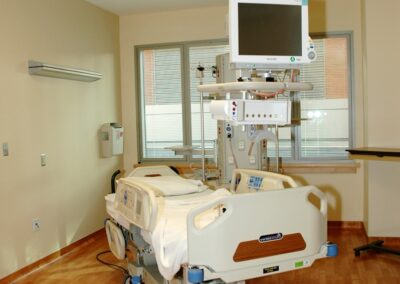Streamlining IoT Deployments with Automated Device Configuration
Introduction to Automated Device Configuration in IoT
Automating device configuration in IoT can significantly simplify the deployment and management of connected devices, particularly in fast-evolving regions like Saudi Arabia and the UAE. These areas, with cities like Riyadh and Dubai at the forefront, are rapidly adopting smart technologies to enhance urban living and business operations. Automated configuration ensures that IoT devices are set up and maintained with minimal human intervention, leading to greater efficiency and reliability. This process is critical for large-scale IoT deployments where manual configuration would be time-consuming and prone to errors.
By implementing automated device configuration, businesses can deploy IoT devices quickly and consistently. This approach leverages software tools that automatically configure devices according to predefined settings and policies. In Dubai’s smart city initiatives, for instance, automated configuration allows for the swift setup of thousands of sensors and devices across the city. This not only accelerates deployment but also ensures uniformity and compliance with established standards. Automated configuration tools can handle complex setups, reducing the burden on IT teams and allowing them to focus on more strategic tasks.
Additionally, automated device configuration enhances the manageability of IoT systems by enabling remote updates and maintenance. In Saudi Arabia, where the industrial IoT is gaining momentum, automated configuration tools can remotely update device settings and firmware, ensuring that all devices operate with the latest features and security patches. This capability is crucial for maintaining system integrity and preventing vulnerabilities. By automating these processes, businesses can achieve a higher level of operational efficiency and reliability, critical factors for successful IoT deployments.
Benefits of Automating Device Configuration
Automating device configuration offers numerous benefits, including increased deployment speed, improved consistency, and enhanced security. One of the primary advantages is the rapid deployment of IoT devices. In smart cities like Riyadh, where extensive sensor networks are required, automated configuration tools enable the quick setup of devices, ensuring that projects stay on schedule. This speed is particularly beneficial in dynamic environments where time-to-market is critical. By reducing the time required for manual configuration, businesses can deploy IoT solutions more efficiently and respond swiftly to market demands.
Consistency is another key benefit of automated device configuration. Manual setup processes are susceptible to human error, leading to inconsistencies that can affect system performance. Automated tools ensure that each device is configured exactly according to predefined parameters, maintaining uniformity across the entire network. In Dubai’s extensive IoT deployments, this consistency is vital for ensuring that all devices communicate effectively and perform as expected. By eliminating configuration errors, businesses can enhance the reliability and predictability of their IoT systems.
Enhanced security is a crucial advantage of automated device configuration. IoT devices are often targets for cyberattacks, and maintaining robust security is essential. Automated configuration tools can enforce security policies consistently across all devices, ensuring that each one operates with the latest security measures. In Saudi Arabia, where cybersecurity is a top priority, this capability helps protect sensitive data and infrastructure from threats. Automated tools can also promptly deploy security patches and updates, reducing the window of vulnerability. By automating these processes, businesses can fortify their IoT deployments against potential cyber threats.
Case Studies: Successful Implementations of Automated Device Configuration
A compelling case study of automated device configuration is the implementation of smart grid technology in the UAE. Smart grids rely on a vast array of sensors and devices to monitor and manage energy distribution. Automated configuration tools have been instrumental in deploying these devices swiftly and efficiently. By automating the setup process, utility companies have ensured that all devices are configured consistently, enhancing the grid’s reliability and performance. This approach has resulted in improved energy efficiency and reduced operational costs, demonstrating the transformative potential of automated device configuration.
In Riyadh, the healthcare sector has benefited significantly from automated device configuration. Hospitals and clinics use IoT devices to monitor patient health, manage medical equipment, and streamline administrative processes. Automated configuration tools enable the quick and consistent setup of these devices, ensuring that they operate optimally. For example, automated tools can configure patient monitoring devices to collect and transmit data according to predefined protocols, reducing setup time and improving data accuracy. This efficiency has been crucial during the COVID-19 pandemic, enabling healthcare providers to rapidly deploy and manage new devices to meet increased demand.
Another notable example is the logistics industry in Dubai, where automated device configuration has transformed fleet management. Companies use IoT devices to track vehicles, monitor driver behavior, and optimize delivery routes. Automated configuration tools ensure that each device is set up correctly, allowing for seamless data integration and real-time monitoring. This consistency improves operational efficiency and reduces the risk of errors that could disrupt logistics operations. By leveraging automated configuration, logistics companies in Dubai have enhanced their ability to manage large fleets effectively, ensuring timely deliveries and high service quality.
Conclusion: The Future of Automated Device Configuration in IoT
Automating device configuration is essential for simplifying the deployment and management of IoT devices. By leveraging advanced tools and technologies, businesses in Saudi Arabia and the UAE can achieve greater efficiency, consistency, and security in their IoT deployments. Successful case studies from Riyadh and Dubai highlight the significant benefits of automated configuration, including rapid deployment, improved reliability, and enhanced security. As IoT technology continues to evolve, automated device configuration will play a critical role in enabling scalable and resilient IoT systems, driving innovation and operational excellence in an increasingly connected world.
—
#AutomatingDeviceConfigurationInIoT, #IoTAutomation, #SmartCities, #BusinessEfficiency, #ModernTechnology, #SaudiArabia, #UAE, #Riyadh, #Dubai































